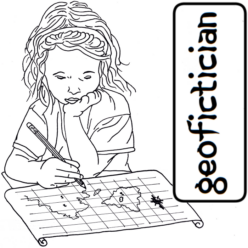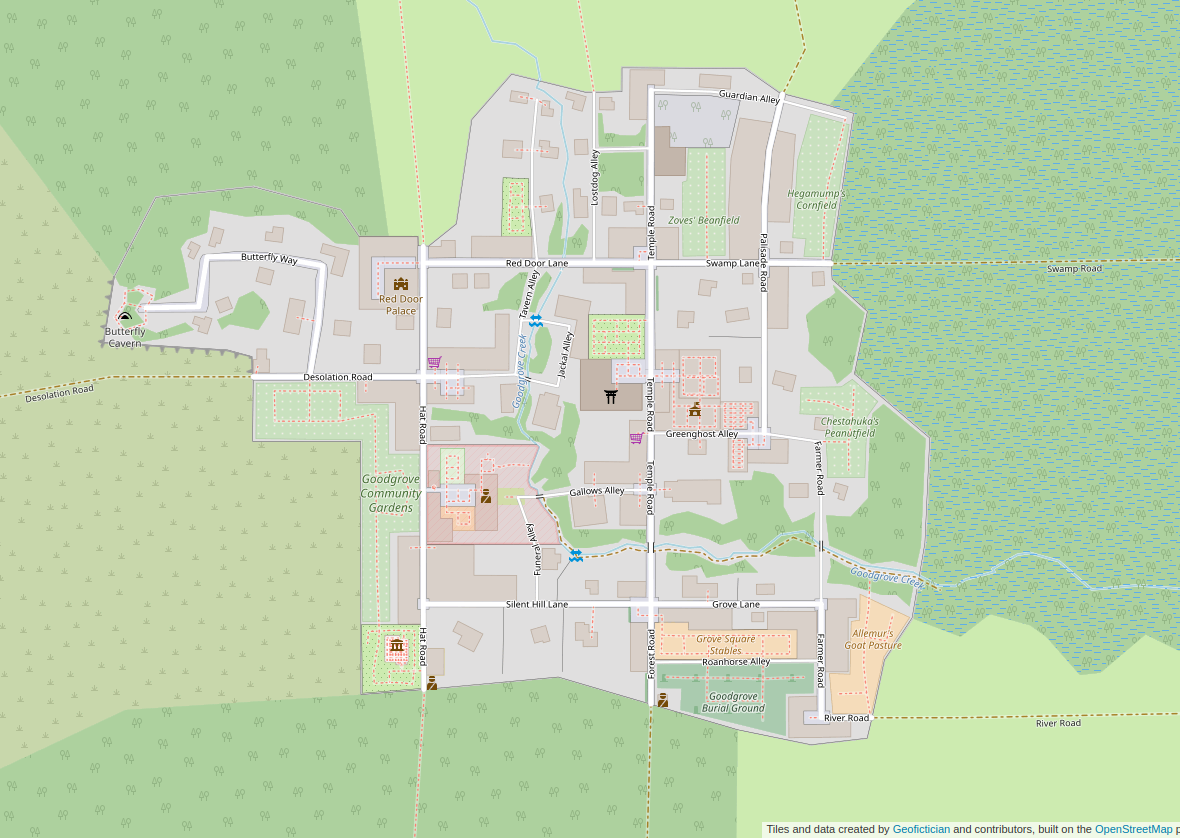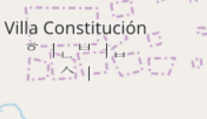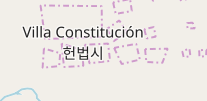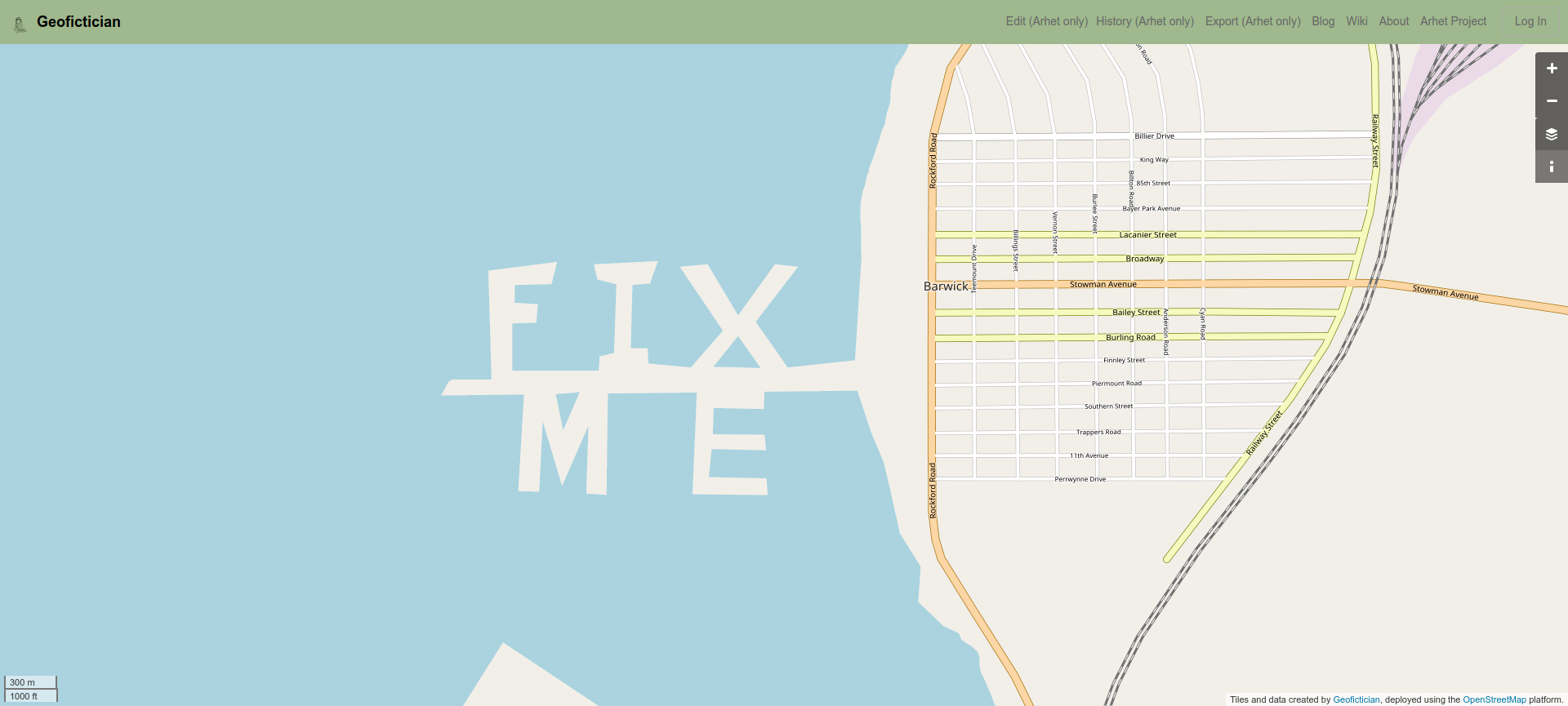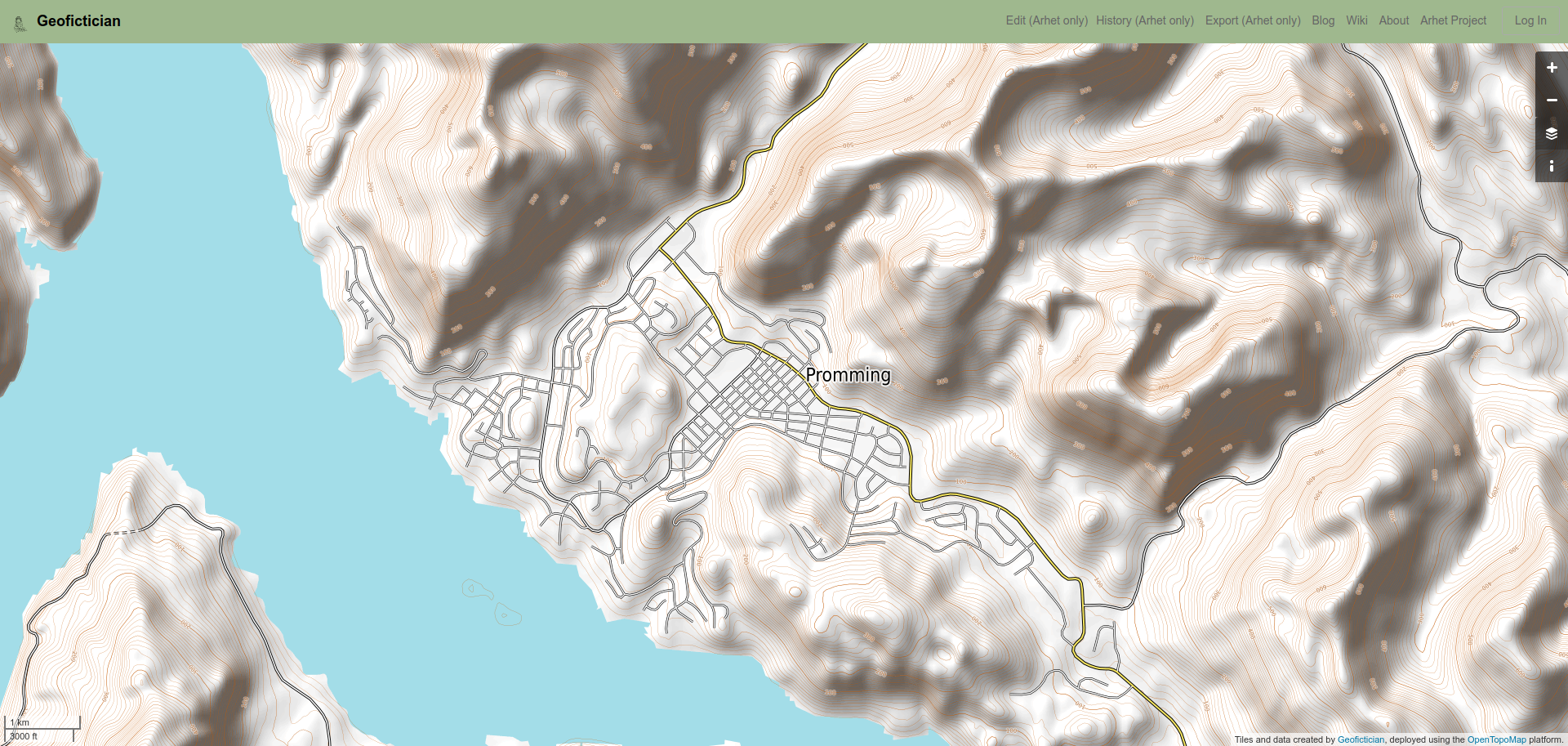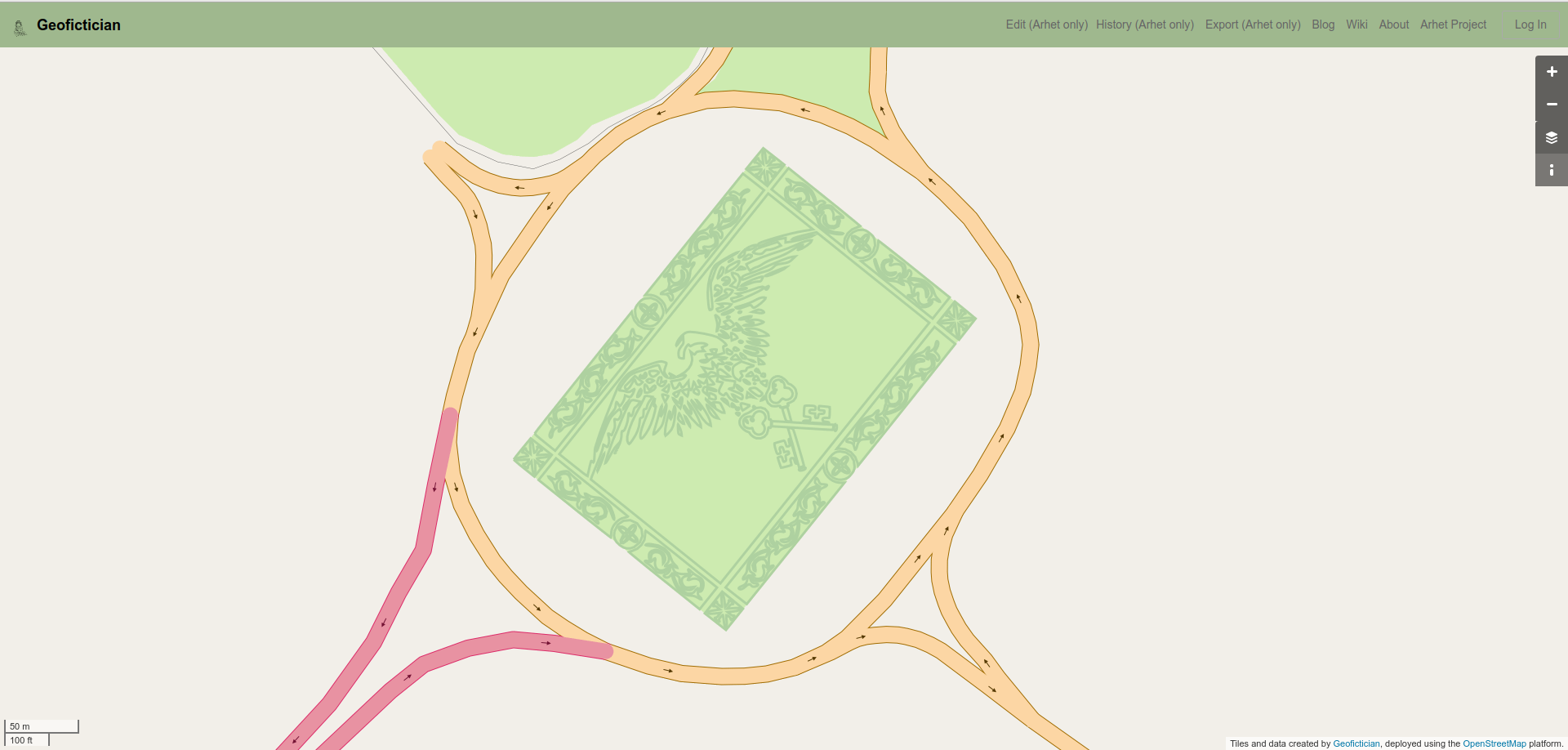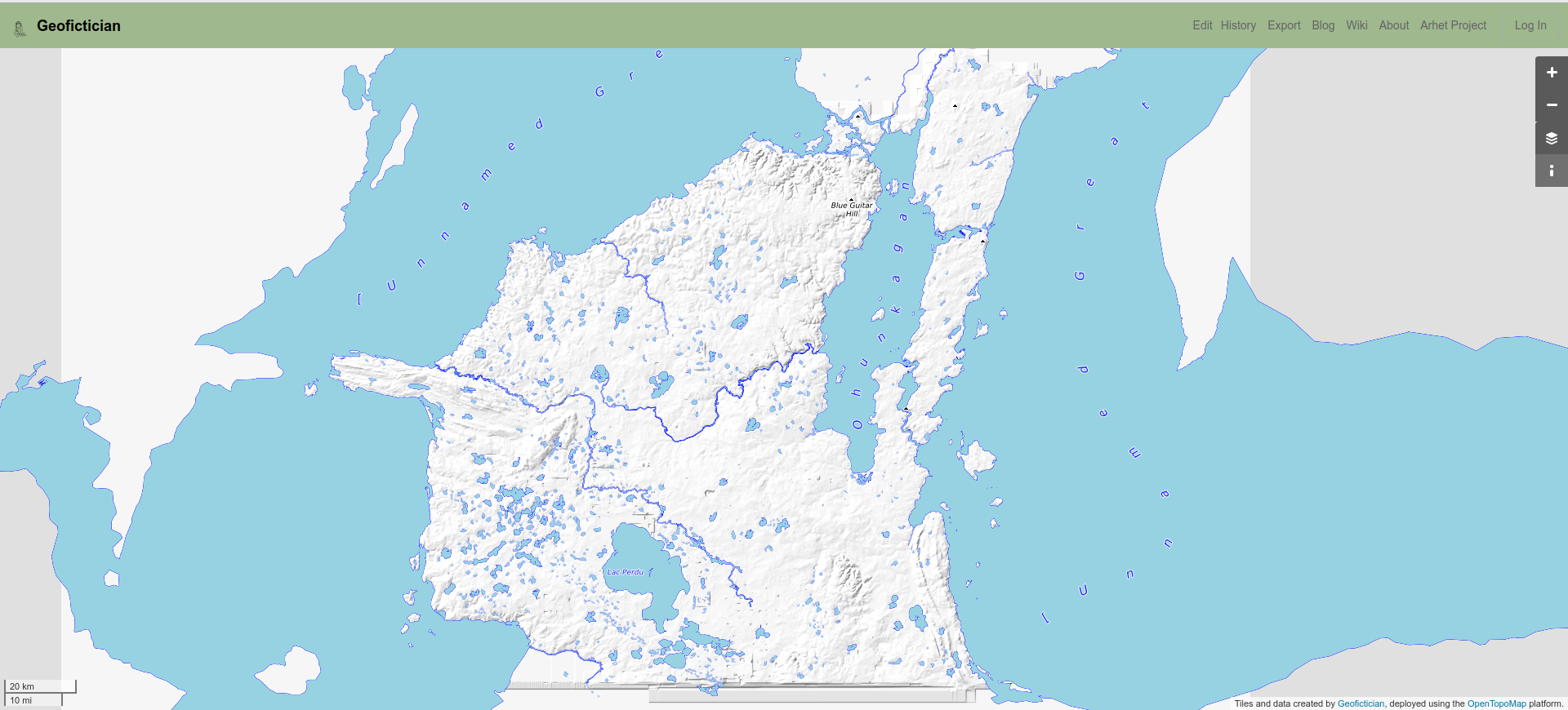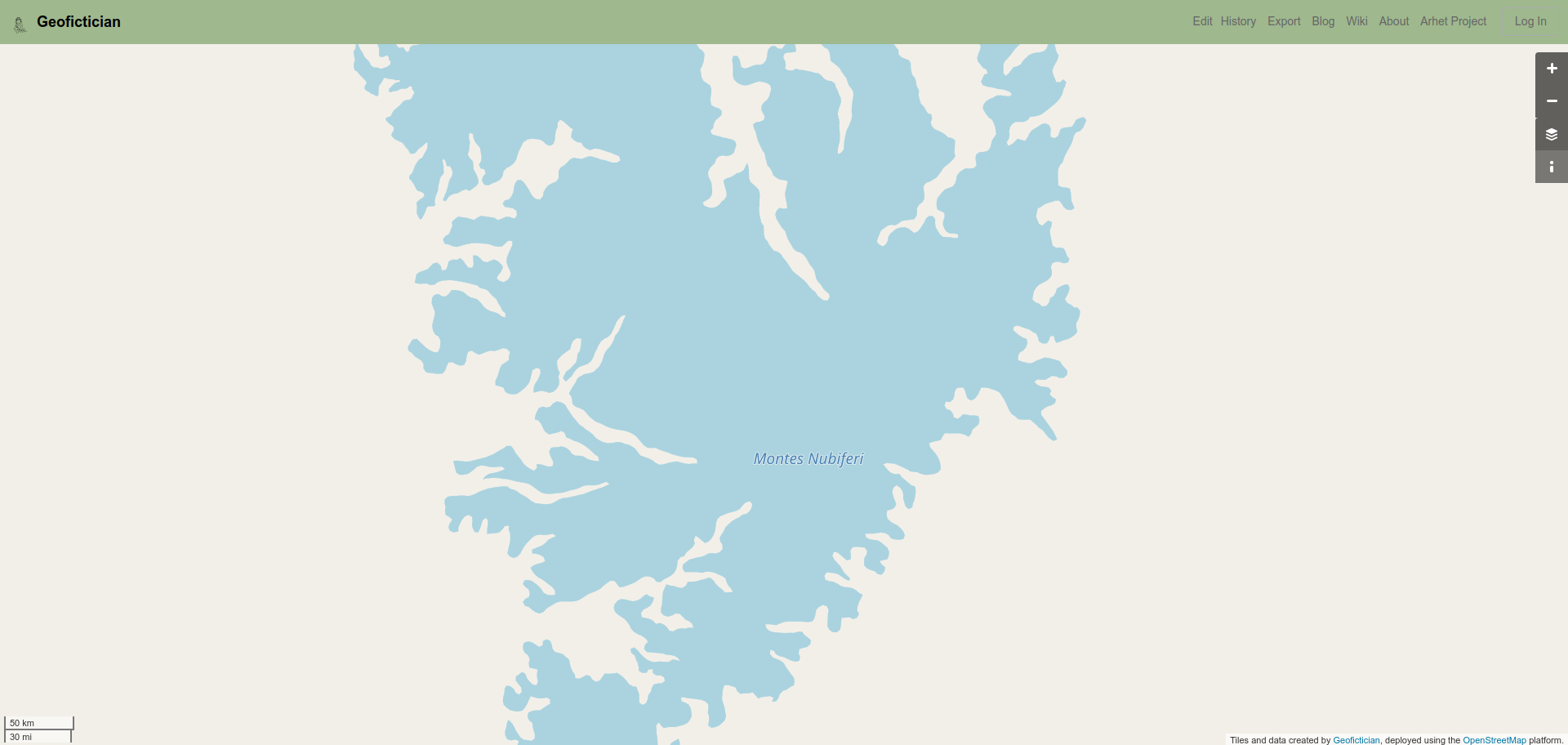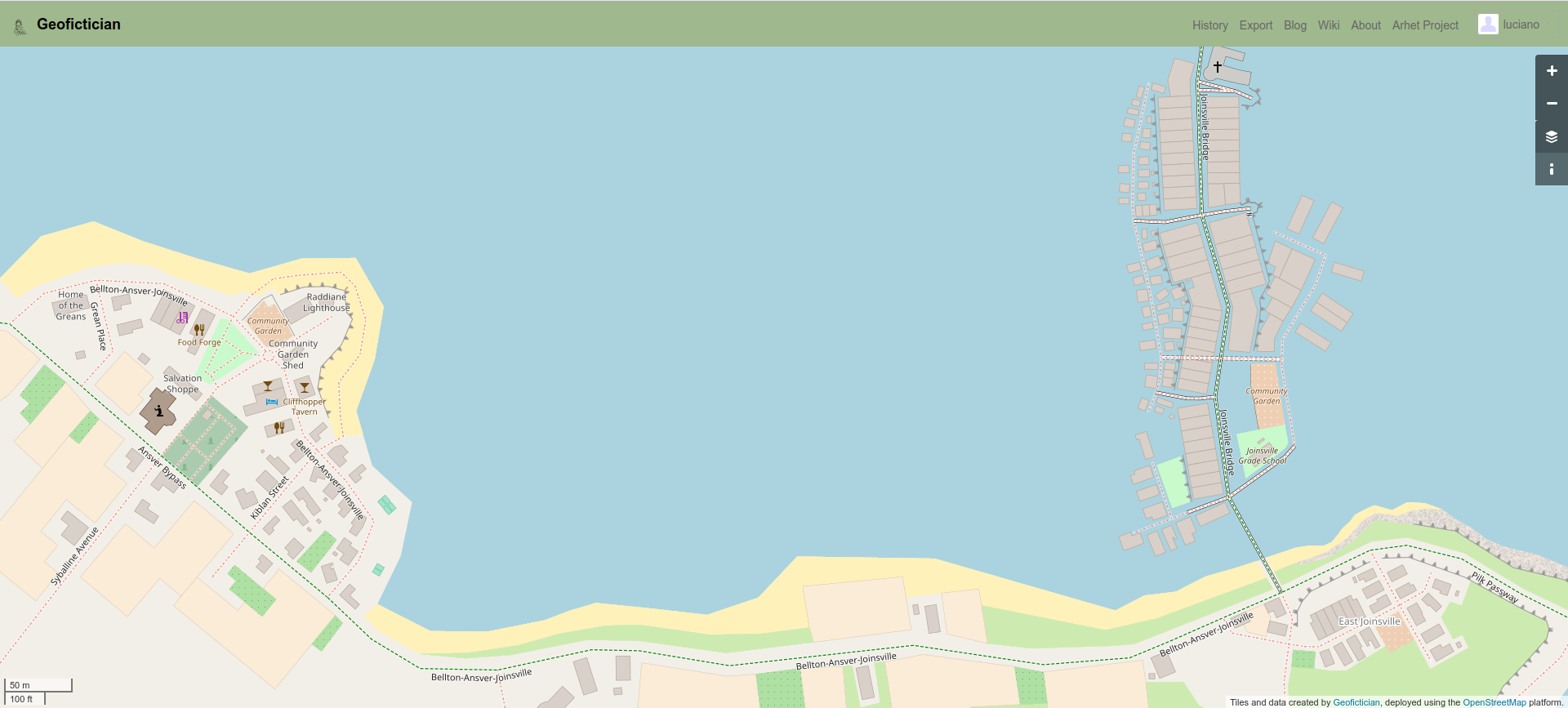Castine is an imaginary country that once existed on the imaginary planet I prefer to call Ogieff. In fact, the imaginary planet doesn’t have an official name – it’s hosted at opengeofiction.net, which all the users call, simply, “OGF”. That initialism leads to my preferred name for the planet – just sound it out.
There is a real place called Castine – it’s a small town in Maine, USA. This is not that Castine.
I joined OGF in 2014, and Castine appeared and began evolving sometime in the year after that, I think – in 2015. I also became an admin on the opengeofiction.net website in that year.
During the period from 2015 to 2017, Castine became the locus of a kind of meta-proxy-war, where I used it as a stand-in for a never-ending argument I liked to have with my fellow OGF admins.
The issue in question was the rule about “verisimilitude”. I had long felt (and continue to feel) that OGF’s verisimilitude rule is a bad idea – it’s vague and impossible to enforce consistently. It has no objectivity. The principle is that mapping on the OGF world is supposed to be “realistic” in the sense that it eschews fantasy and sci-fi elements, and doesn’t contain cultural or cartographic artifacts that couldn’t reasonably exist in the real world. Hence, people who build 50 km bridges or tunnels are called out for violating verisimilitude, likewise more science-fictional elements like space elevators or fantasy elements like dens of dragons or nations of 1920’s-era talking sheep (all these examples really occurred at various times on the OGF planet).
Castine was (is) a borderline case of violating verisimilitude. Some users felt it violated the rule, others felt it was okay. My position was always something like: “since we can’t decide if this violates verisimilitude or not, but it’s really good mapping… c’cmon, people, let’s drop (or at least, fix) this stupid rule.”
Of course, this was an unpopular stance. And in the long run, I lost the battle to remove or even alter the verisimilitude rule on Ogieff, and I made my peace with it.
One way that I made that peace with it, was to create my own, separate planet! In 2016, I started the planet Arhet as a kind of alternative project to Ogieff. By 2018, it had several active mappers and its own emerging community. The principle concept behind Arhet is to be a kind of “libertarian” reinterpretation of OGF. It has very few rules: no verisimilitude rule, no assigned territories, etc. And somewhat to my own surprise, it sorta kinda works. The key to it working, I reckon, is that unlike OGF, Arhet is not “open” to any and all comers. There’s an application process to join, and although I enforce almost no rules for the planet, I do stand firm that arguments or disagreements between users that escalate to my remit will simply result in immediate banning of all parties. That keeps everyone participating on best behavior, I guess.
The irony is that then, in 2021, I took over the hosting of the original opengeofiction.net. So now I host a little federation of two imaginary planets, Ogieff and Arhet, which have substantially overlapping user communities but having quite different rule systems. And I’m okay about that. I inevitably yield to my fellow admins, whose hard work and dedication to the project I admire, when it comes to matters of rules and judgements on Ogieff. But off to the side, I run Arhet singularly, and I insist on its fundamentally anarchic state.
In around 2020, the creator of Castine (Ramasham) was banned from Ogieff – ultimately for violating another, different rule: the rule prohibiting direct upload of data copied from OSM. OSM is OpenStreetMap, which is a map of the Real World™ in the same technological vein as our two imaginary planets. This is the so-called “slippy map” paradigm, originally popularized by mapquest and perfected and dominated by google maps. OSM runs on and supports a whole complex ecosystem of software that is all open source, as a kind of alternative to google maps, and that’s why it’s easy (uh, “easy” in a financial sense, not “easy” in a technical sense) for us to use the same software to run OGF and Arhet.
Anyway, there is (and there has always been) a rule prohibiting copying OSM data into OGF. Ostensibly this is motivated by paranoia about copyright violation, but in fact copyright has little to do with it, in my own estimation – there are easy ways to avoid issues around copyright as long as you follow along with OSM’s “attribution and re-use” rules. The real motivation for the prohibition is legitimate, though: on OGF, we want to discourage mappers from spamming the planet’s map with cut-n-paste copies of real-world places. It’s low effort geofiction and discourages creativity.
That said, when I set up Arhet I decided to also not enforce OGF’s “no real-world (OSM) data” rule. And indeed I myself played around with cutting and pasting some data from OSM, including an ephemeral instance of country I called “Lingit Aani” (this is Tlingit language) – a copy of the islands of Southeast Alaska but minus any nearby continent, as an open-ocean archipelago. I later deleted this, but there are multiple copy-the-real-world geofiction projects going on in Arhet, these days, including clones of Sakhalin Island (Siberia) and Romania’s Bucharest, and at least two Polands – perhaps more.
I guess Castine’s creator, Ramasham, had been doing some copy-pasting of OSM data to increase the detail and complexity of Castine’s cartography. Notably, this airport is a modified cut-n-paste copy of one in the real world, with only the names of things altered. And so Ramasham was banned from OGF. Rules are rules, and that “no copy from OSM” rule is actually probably the most common reason for mappers to be banned from the site.
Now we come to February of this year (2022). The admin team at OGF, moving to “clean up” various abandoned territories around our (imaginary) globe, decided finally to delete Castine once and for all. And I had a moment of deep sadness and regret. Despite my having leveraged Castine back in 2016 as part of my proxy war with the other admins over the verisimilitude rule, in fact I really, really like Castine.
From a technical standpoint, Ramasham was at best a mediocre mapper. But the imaginary country is full of cartographic whimsy and playfulness, the naming is thorough and inventive and culturally intriguing, and the detail in some parts is quite incredible. I thought it was worth preserving.
So I considered: Ramasham’s ban from OGF was for violating the “No OSM data” rule; if there were any other issues with Castine, they were issues with the “verisimilitude” rule; so… hey – Arhet doesn’t have those rules!
The solution was obvious. I decided I’d move Castine to Arhet. And even more conveniently, the exact latitude and longitude of Castine’s old Ogieff location was open an unused on Arhet. I figured it should be quite easy to simply “cut-n-paste” the whole of Castine into Arhet.
Yikes! This turned out to be the far from the case – it was not easy. Not at all. Castine included almost 2 million distinct GIS objects: nodes, ways, relations. This was not trivial to simply cut, paste, and upload into the new site. And further, the data quality was quite poor, from a technical standpoint. Thousands of improperly stacked ways on shared nodes, hundreds of lazily-crafted or incomplete data relations, etc.
I have spent the last week in a kind of Alice-in-Wonderland nightmare of trying to rescue Castine and upload it to the Arhet planet. I think that as of this morning, that I have succeeded, but not before almost destroying the Arhet server altogether in the process.
Without going into a lot of detail, it seems that there were a couple of relations (a technical term in this case for a type of data object used in OSM GIS software) that were apparently so badly constructed that they broke the server’s database. Since I had to do a kind of trial-and-error search to finally identify these objects, it took a very long time. I’d upload some subset of the full Castine dataset, and watch to see if the database crashed or not. If it didn’t, fine, I’d try another set of data. If it crashed, I’d have to go back to the last backup of the server, restore it, and try again. I think I did a backup-restore cycle maybe 12 or 14 times over the last week on the Arhet server. It was painful, and tedious, and immensely frustrating.
The crash-provoking objects in question are puzzling. I still don’t understand why they crash the database. And given my difficulties in identifying them (and surviving them – see below), I probably won’t spend time, any time soon, trying to figure them out. They are “Giant Chessboards” – three of them. Interestingly, Castine also has other “Giant Chessboards” (e.g. here) that do not cause any kind of data problem. They are apparently implemented differently, in their details.
The problem was compounded yesterday, when, much to my shocked dismay, the server-level backup-restore functionality offered by my hosting provider, Linode – that I’d been so repeatedly abusing – suddenly and inexplicably failed to work.
So for a day (yesterday) the world was Arhetless. The server was down. I was in a panic because it seemed I’d have to fully rebuild the server from scratch. And it was only pure luck that I even had a copy of the map data, because I was still running a kludgey render engine (map drawing process) for Arhet on a different machine.
I wrangled with tech support at Linode, and they finally held my hand (or was it that they held my server’s hand?) through a successful if stressful restoration of the server’s image.
Let’s just say, these days Castine now has a quite colorful meta-history.
I reached out to the creator of Castine, sending an email to the address on record at OGF, announcing its restoration in Arhet. I would absolutely welcome and be pleased if that person would come back and take up work on the country, again – they won’t be constrained by the rules and regulations on Ogieff. Unfortunately I haven’t heard back. I speculate that there might be some bitterness about the whole business of having been first praised and then banned, back a few years ago.
The link to Castine-in-Arhet is here:
https://arhet.rent-a-planet.com/relation/10996
Please feel free to explore. I decided not to bother with adding extensive screenshots for this blog post – the point of having the Castine map hosted on the server is that you can explore easily directly on the website.
Happy mapping.
Music to view geofiction to: Dawg Yawp, “Lost At Sea.”
